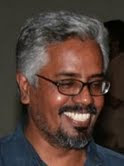ramgopal varma's aag

SHOLAY TO AAG - A JOURNEY TO NOWHERE
"If you had to see just one Hindi film in your life, just one, then see Sholay. It's deservedly considered the most perfect Hindi film ever made. So much so that several critics insist that innovation in Hindi films ends with Sholay and that everything after that is repetitious trash."
Bollywood, Ashok Banker
The disappointment of Ramgopal Varma's Aag is that it neither lives upto the expectations of the Sholay-fans nor does it satisfy the youth who deserve a contemporary version of it. And by following Sholay so closely, it makes comparisons inevitable. Evidently the effort was not to make a Sholay of the post-liberlised India. As a result, everything about Aag looks jaded and aged – as if all the characters of Sholay have themselves replayed the roles after all these years; their old age writ all over their tired gestures, faces and bodies. The central characters of the double male twins – the Police Officer and the dacoit, and the small time crooks who come to save the village - both do not have the charge or charm of the earlier version. The failure of Aag is its failure to capture in its re-created narrative what happened in between the two versions. Sholay was made in the turbulent 70's (in the Emergency year of 1975) when 'law and order' was all-powerful. There was an overwhelming feeling of being trapped in a limited space – a remote village amidst an expanse of a desolate, rocky landscape. The helpless villagers, the 'injured' police officer who is biding his time to wreak his revenge upon the dacoits – the outsiders who threaten the social order of the village. The village is a microcosm of the nation – with its Hindu-Muslim bhai bhai world of idyllic nationalism where the only threat is from outside, the lawlessness of the dacoits. Sanjeevkumar – the personification of Law in Sholay with both his hands chopped off, is the exact opposite of the 'thousand-armed' fascist state of those dark days. But Babban of Aag lacks all such resonance and looks almost like a maniacal killer.
While all the action in Sholay (the train robbery sequence is one of the most memorable in Indian cinema) is in open spaces, in Aag most of the encounters are in dingy, dilapidated interiors – again alienating the viewer from the sense of space.
The only difference is in the picturisation, with kinky camera movements and fast paced editing, that try to make up for the lost time. The controlled and sober acting style of Mohanlal finds it difficult to jell with that format and rhythm of the film.
To the very end, Ramgopal Varma follows Sholay. But even after a lapse of more than three decades, it is again the one who falls in love with the young widow and wishes to marry her who is fated to die at the end, without consummating their love. No wonder Ashok Banker's words ring so true in the case of Aag


0 Comments:
Post a Comment
Subscribe to Post Comments [Atom]
<< Home